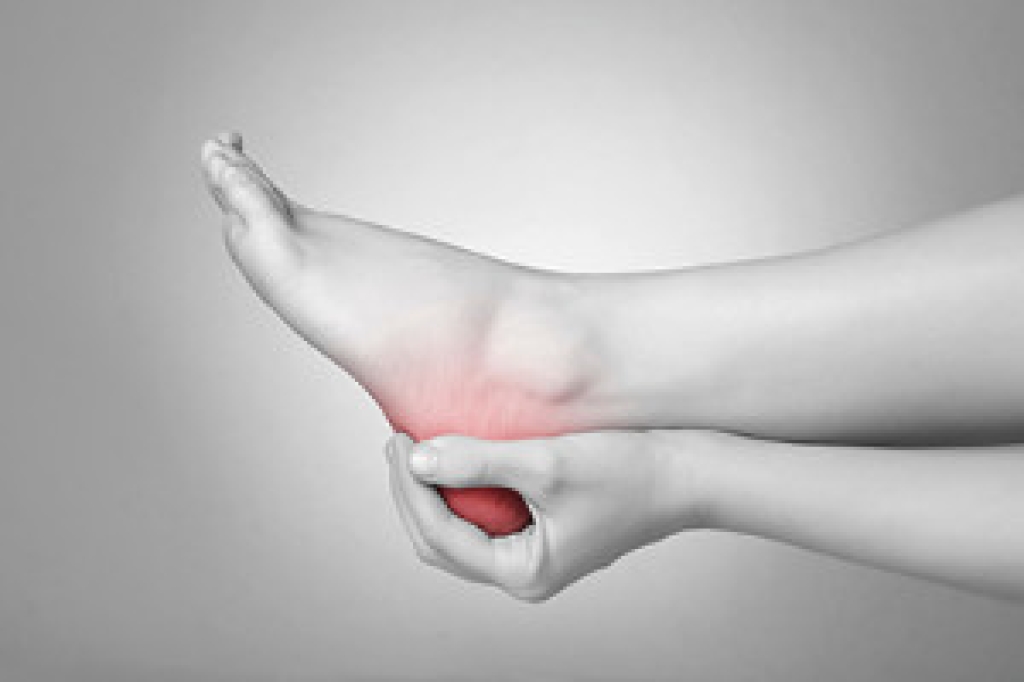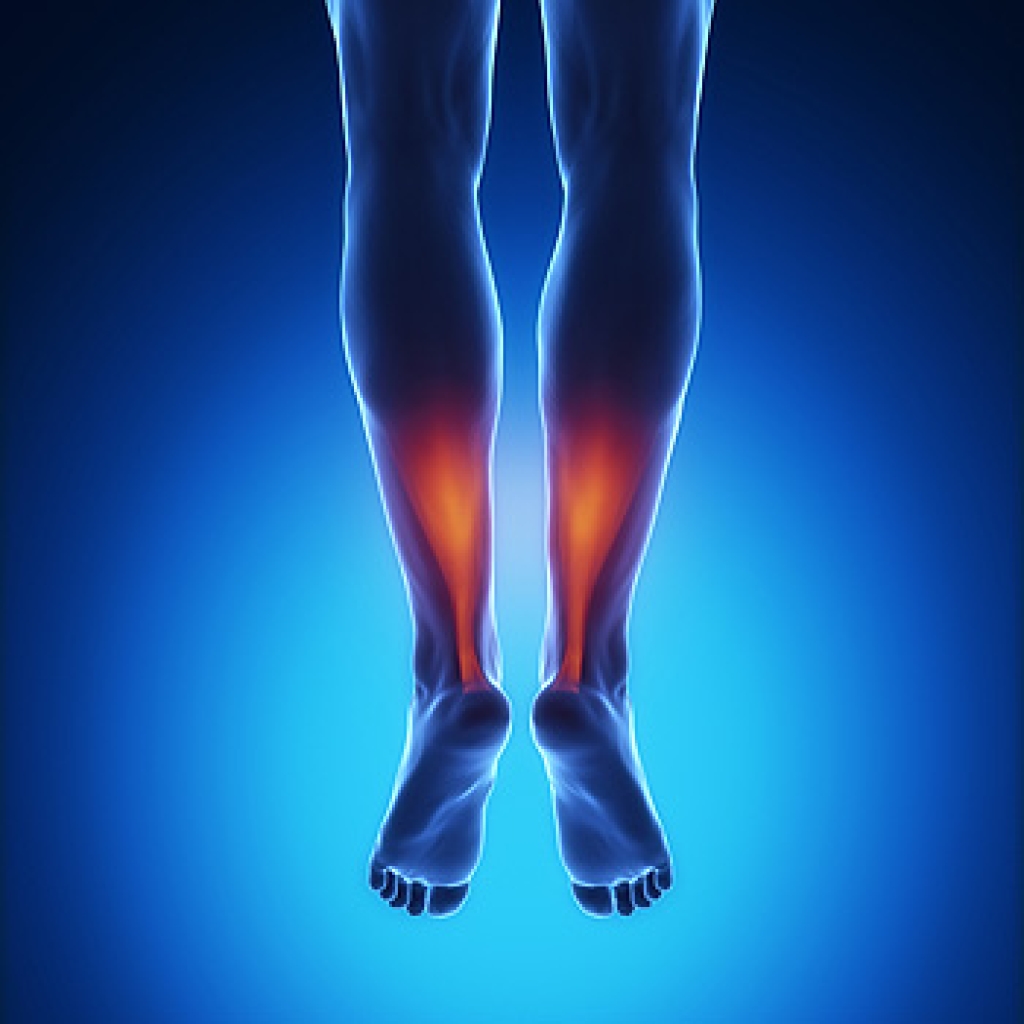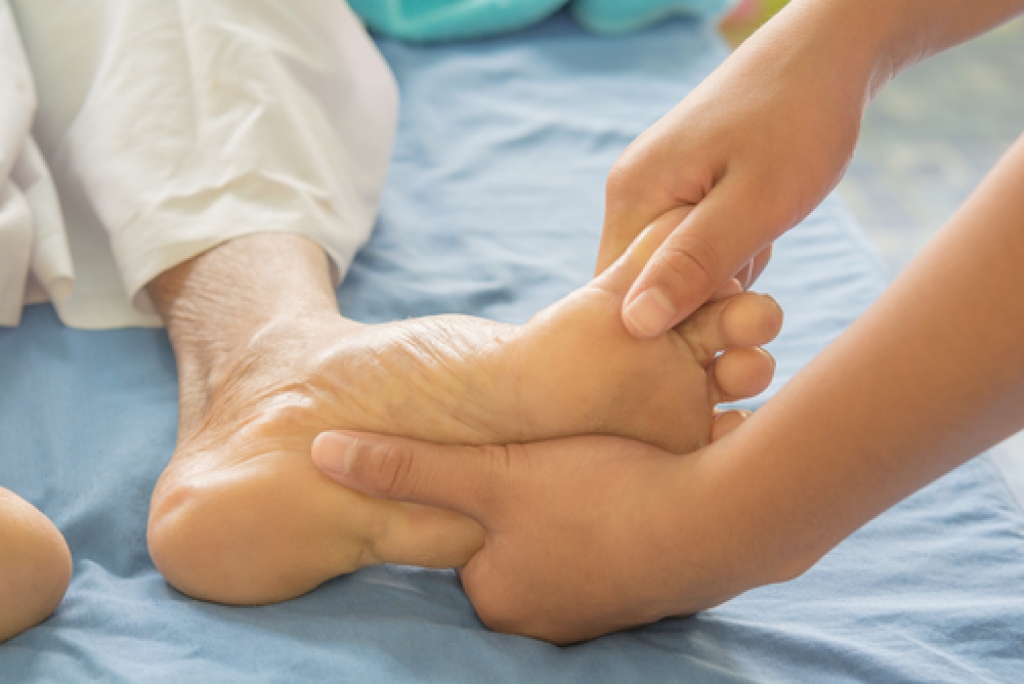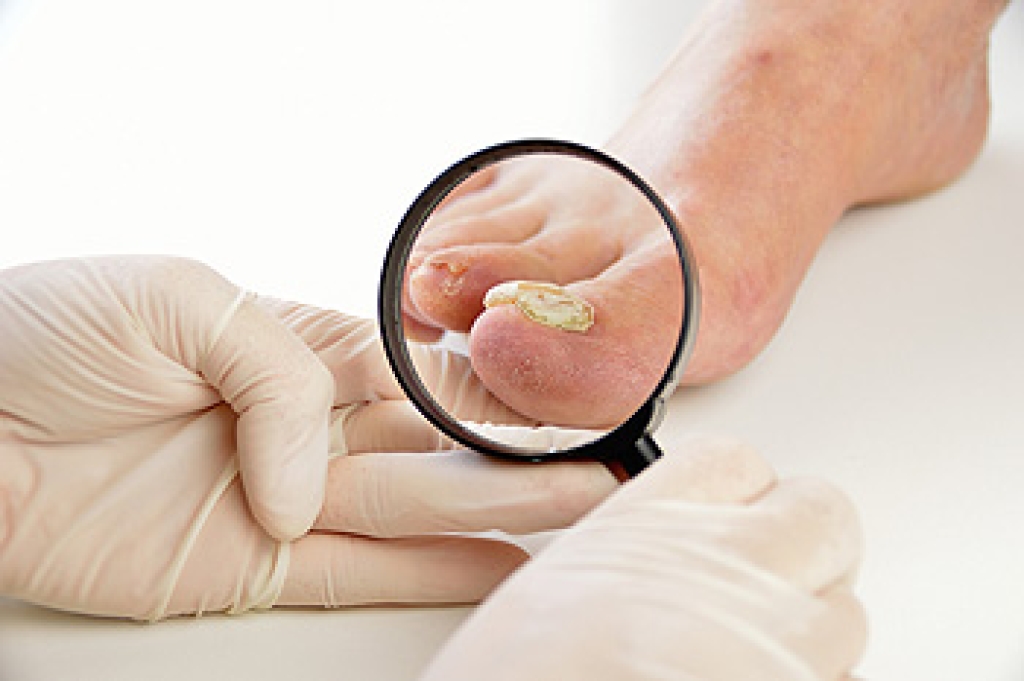 Plantar fasciitis is the result of the plantar fascia, the band on the bottom of the foot that connects the toes to the heel, becoming inflamed. Plantar fasciitis usually results in pain at the bottom of the heel or midfoot. Generally, the pain develops over time and can be either sharp or dull. Pain from plantar fasciitis is usually worse after waking up in the morning, after sitting or lying down for a long period of time, or after climbing stairs. Pain from plantar fasciitis is usually felt after an activity is completed and not as much during the activity. People who are between the ages of 40 and 70 and are active are at a higher risk of developing plantar fasciitis. Those who are obese, pregnant, run long distances, have structural foot problems, or have a very active job are also at a higher risk of developing plantar fasciitis. If you are experiencing the symptoms of plantar fasciitis, it is important to visit a podiatrist for a proper diagnosis and treatment plan.
Plantar fasciitis is the result of the plantar fascia, the band on the bottom of the foot that connects the toes to the heel, becoming inflamed. Plantar fasciitis usually results in pain at the bottom of the heel or midfoot. Generally, the pain develops over time and can be either sharp or dull. Pain from plantar fasciitis is usually worse after waking up in the morning, after sitting or lying down for a long period of time, or after climbing stairs. Pain from plantar fasciitis is usually felt after an activity is completed and not as much during the activity. People who are between the ages of 40 and 70 and are active are at a higher risk of developing plantar fasciitis. Those who are obese, pregnant, run long distances, have structural foot problems, or have a very active job are also at a higher risk of developing plantar fasciitis. If you are experiencing the symptoms of plantar fasciitis, it is important to visit a podiatrist for a proper diagnosis and treatment plan.
Plantar fasciitis is a common foot condition that is often caused by a strain injury. If you are experiencing heel pain or symptoms of plantar fasciitis, contact one of our podiatrists from Manhattan Footcare. Our doctors can provide the care you need to keep you pain-free and on your feet.
What Is Plantar Fasciitis?
Plantar fasciitis is one of the most common causes of heel pain. The plantar fascia is a ligament that connects your heel to the front of your foot. When this ligament becomes inflamed, plantar fasciitis is the result. If you have plantar fasciitis you will have a stabbing pain that usually occurs with your first steps in the morning. As the day progresses and you walk around more, this pain will start to disappear, but it will return after long periods of standing or sitting.
What Causes Plantar Fasciitis?
- Excessive running
- Having high arches in your feet
- Other foot issues such as flat feet
- Pregnancy (due to the sudden weight gain)
- Being on your feet very often
There are some risk factors that may make you more likely to develop plantar fasciitis compared to others. The condition most commonly affects adults between the ages of 40 and 60. It also tends to affect people who are obese because the extra pounds result in extra stress being placed on the plantar fascia.
Prevention
- Take good care of your feet – Wear shoes that have good arch support and heel cushioning.
- Maintain a healthy weight
- If you are a runner, alternate running with other sports that won’t cause heel pain
There are a variety of treatment options available for plantar fasciitis along with the pain that accompanies it. Additionally, physical therapy is a very important component in the treatment process. It is important that you meet with your podiatrist to determine which treatment option is best for you.
If you have any questions, please feel free to contact our offices located in Manhattan and Brooklyn, NY . We offer the newest diagnostic and treatment technologies for all your foot care needs.


 Fungal nail infections
Fungal nail infections
